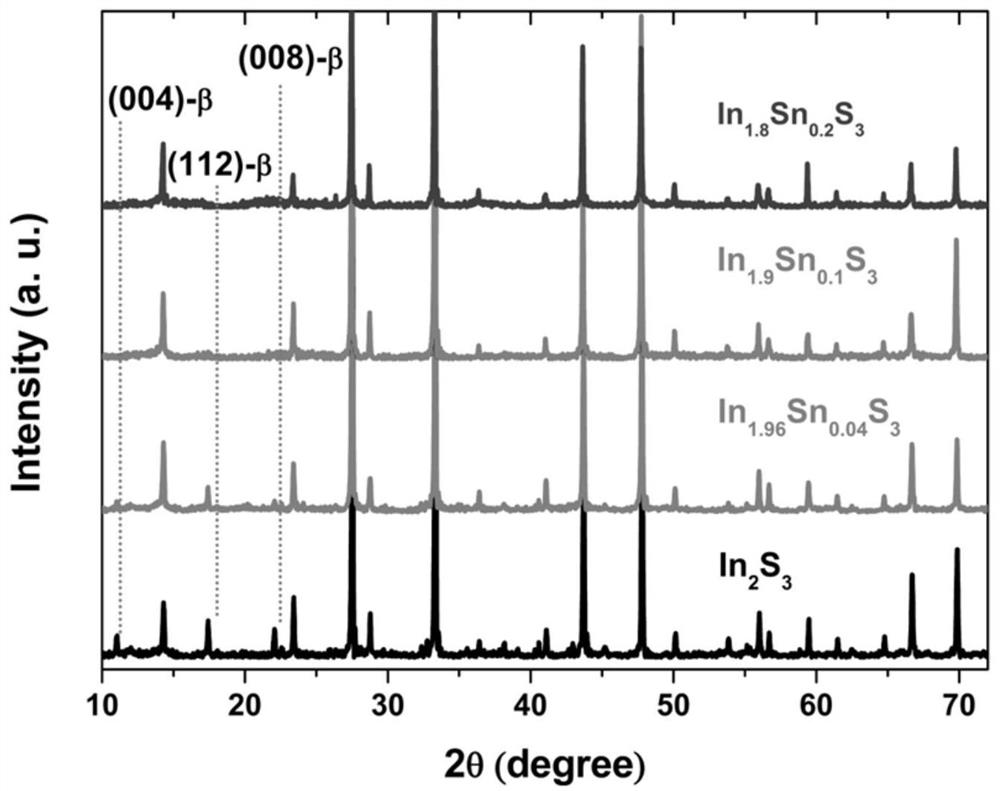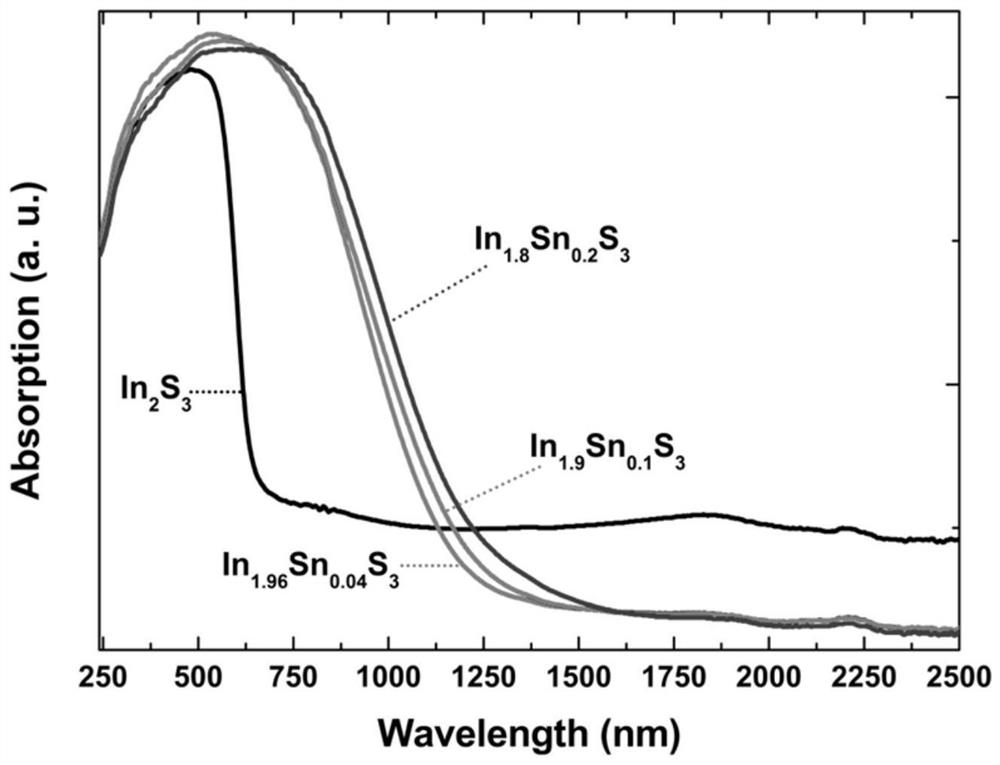Method for reducing optical band gap of indium sulfide semiconductor
A semiconductor and sulfide technology, which is applied in the field of reducing the optical band gap of In2S3 semiconductors, can solve problems such as inability to realize applications, and achieve the effects of reducing the band gap, expanding the scope of use, and increasing the absorption capacity.
- Summary
- Abstract
- Description
- Claims
- Application Information
AI Technical Summary
Problems solved by technology
Method used
Image
Examples
Embodiment
[0023] In 2-x sn x S 3 The samples are all sintered by vacuum solid state reaction. According to the stoichiometric ratio, In particles (5N), S powder (5N), and X (X=Sn) (4N) powder are vacuum-packed in a quartz tube, and the temperature is slowly raised to 850°C and kept for more than 24 hours. Finally, the sample is cooled in the furnace . The obtained sample was ground and repackaged, and re-sintered at 850°C for more than 24 hours to obtain the target powder sample for testing and characterization.
[0024] The X-ray diffraction pattern was measured on a Bruker D8 ADVANCE X-ray diffractometer. The UV-Vis-NIR absorption spectra of the materials were measured on a Hitachi U4100 UV-Vis-NIR spectrophotometer. The elemental analysis of materials was measured under a scanning electron microscope equipped with an energy dispersive spectrometer.
[0025] Based on the density functional theory framework, the electronic band structure in the case of Sn element doping was calcu...
PUM
 Login to View More
Login to View More Abstract
Description
Claims
Application Information
 Login to View More
Login to View More - R&D Engineer
- R&D Manager
- IP Professional
- Industry Leading Data Capabilities
- Powerful AI technology
- Patent DNA Extraction
Browse by: Latest US Patents, China's latest patents, Technical Efficacy Thesaurus, Application Domain, Technology Topic, Popular Technical Reports.
© 2024 PatSnap. All rights reserved.Legal|Privacy policy|Modern Slavery Act Transparency Statement|Sitemap|About US| Contact US: help@patsnap.com










